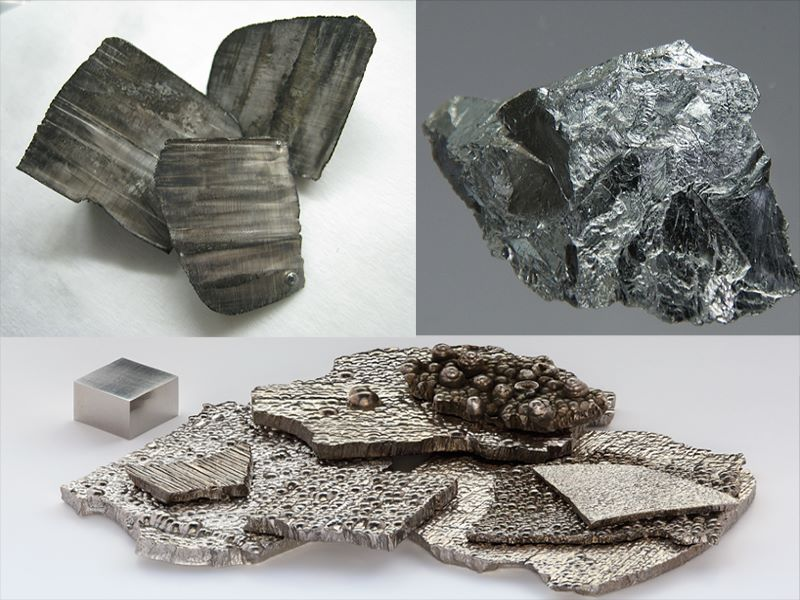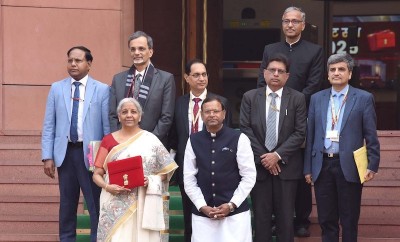
India's green energy goals face challenges over reliance on imported critical minerals: ICRA Report
New Delhi: Concentration of critical minerals in certain geographic regions like China render global supply chains vulnerable to disruptions leading to increased price volatility. This poses significant challenges to India’s energy security due to its total reliance on imports of critical minerals like lithium, cobalt, and nickel, which are essential for the green technology transition needed to meet its net-zero commitments by 2070, rating agency ICRA noted in a report.
According to Girishkumar Kadam, Senior Vice-President & Group Head, Corporate Sector Ratings, ICRA: “Global deposits of critical minerals are more concentrated than most industrial minerals, fossil fuels, and hydrocarbons. Additionally, China dominates the processing and refining of critical minerals, controlling between 65%-100% of the global capacity to make battery grade lithium, cobalt, manganese, and graphite.”
The India picture
As India strives to step up domestic production of critical minerals, ICRA’s three-part series on the critical minerals sector notes that the preliminary stage of exploration for most of the domestic blocks that are currently being auctioned, suggests that their commercialisation and associated benefits are unlikely to fully accrue in the current decade ending 2030.
“However, given the preliminary stage of exploration for most of the domestic blocks being currently auctioned, their commercialisation and associated benefits are unlikely to fully accrue in the current decade ending 2030. Therefore, India’s downstream manufacturing facilities remain exposed to potential future supply shocks of critical minerals in the interim period,” said Kadam.
The grades of materials used in green technologies are significantly higher than their conventional industrial uses, requiring specialised knowhow in mineral processing and refining technologies.
Therefore, India’s downstream manufacturing facilities are likely to remain exposed to potential future supply shocks of critical minerals in the intervening years.
Further, India’s lack of reserves of critical minerals necessary for the green transition has resulted in 100% import dependence for minerals like lithium, cobalt, and nickel.
Therefore, the Government of India (GoI) has recently started the process of auctioning 38 blocks of critical minerals.
Moreover, with the risk profile of exploration activities being significantly higher for deep-seated/ critical minerals over surficial or bulk minerals, the GoI introduced the auction of ‘Exploration Licence’ to enable a more attractive risk-return framework for bringing specialised overseas mining companies.
The transformation of energy systems from increasing energy density to increasing mineral intensity is an irreversible process for meeting India’s 2070 net zero commitments.
Incentives in exploration, mining, processing crucial
While the GoI has outlined nearly 30% of the overall allocation to the Production Linked Incentive (PLI) scheme to green energy technologies like solar PV, battery, and green hydrogen, however, such incentives are missing in the area of exploration, mining, and processing of critical minerals where India’s domestic capabilities are at a nascent stage.
Therefore, there is a requirement for incentivising domestic capability in critical mineral processing technologies like beneficiation and leaching.
Commenting on this trend, Kadam said: “The Government is auctioning two lithium blocks in the ongoing auctions. The one in Jammu & Kashmir has clay deposits. While the technology for extracting lithium from hard-rock and brine deposits has matured, the same for extracting lithium from clay deposits remains untested globally.
“Given these challenges, the J&K lithium block received less than three bids, resulting in a re-auction of the block. On the other hand, the lithium block being auctioned in Katghora, Chhattisgarh is a hard rock deposit. The ore here belongs to a broader class of lithium-bearing minerals named lepidolite. China is a large producer of lithium from lepidolite ores.
“Therefore, competition to acquire the Katghora mine is likely to be much higher compared to the J&K block. However, given the inferior grade of explored domestic ores, advancement in mineral beneficiation/ processing technology remains critical for commercialisation of domestic critical mineral resources”.
Alternate measures
Apart from developing domestic critical mineral resources, the GoI is parallelly looking at acquiring overseas assets from key resource-rich regions like South America, Australia, and Africa as an alternate measure to ensure mineral security.
Khanij Bidesh India Limited, a joint venture of PSUs NALCO, Hindustan Copper, and Mineral Exploration Company, recently became the first domestic player to acquire overseas lithium brine assets in Argentina.
“Apart from Argentina, India is actively scouting for acquiring critical mineral assets in Chile, Australia, and several African nations including Zambia, Namibia, Congo, Ghana, and Mozambique. Moreover, to strengthen the critical mineral supply chain, India recently became the fourteenth member, and the only developing country of the US-led Mineral Security Partnership, a block consisting of large buyers and sellers of critical minerals.
“To supplement India’s scarce domestic primary resources of critical minerals, through policy interventions like the Battery Waste Management Rules, the Government has been laying emphasis on investing in circular supply chains. However, India has had limited success in material recycling of even bulk materials. Therefore, developing the necessary infrastructure for achieving the GoI’s stiff critical mineral recycling targets remains to be seen,” Kadam added.
The global scenario
The accelerated pace of adoption of green technologies like electric vehicles, renewable energy (solar and wind), and green hydrogen in the post-Covid era is expected to result in a surge in demand for critical minerals, which would entail a significantly greater number of domestic mines to support the green economy of the future.
Therefore, the global energy policy priority has been gradually shifting from fuel/energy security earlier to mineral security now.
Therefore, critical mineral global supply chains remain exposed to supply shocks from key producing/ processing regions, which in turn results in elevated price volatility.
Consequently, countries are increasingly looking at ways to increase self-sufficiency and reduce import dependence. In that context, India’s efforts to step up domestic production of critical minerals remains crucial for our energy security.”
With China gaining a significant lead in this area, developed economies, like the US and the European Union, are increasingly looking at rebuilding critical mineral supply chains nearer to shore.
Support Our Journalism
We cannot do without you.. your contribution supports unbiased journalism
IBNS is not driven by any ism- not wokeism, not racism, not skewed secularism, not hyper right-wing or left liberal ideals, nor by any hardline religious beliefs or hyper nationalism. We want to serve you good old objective news, as they are. We do not judge or preach. We let people decide for themselves. We only try to present factual and well-sourced news.







